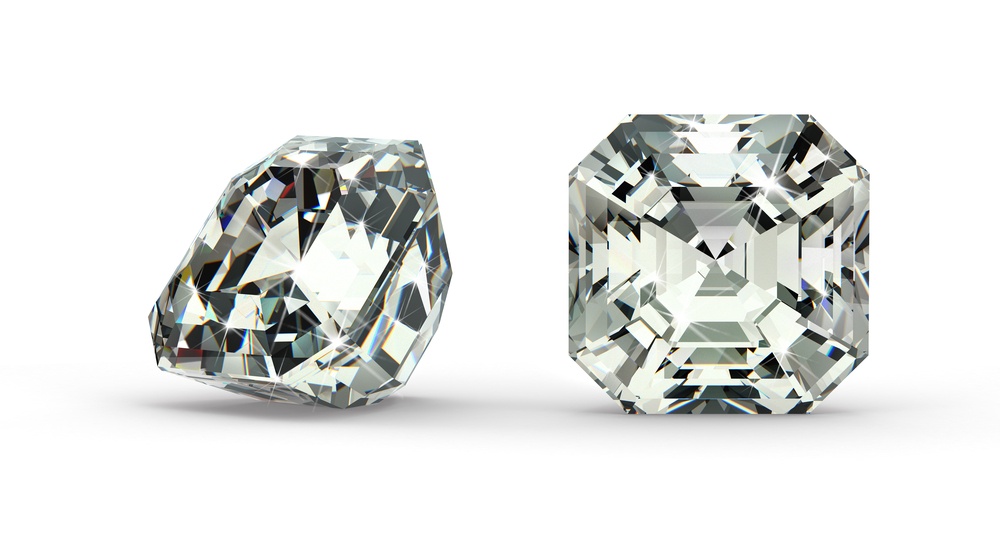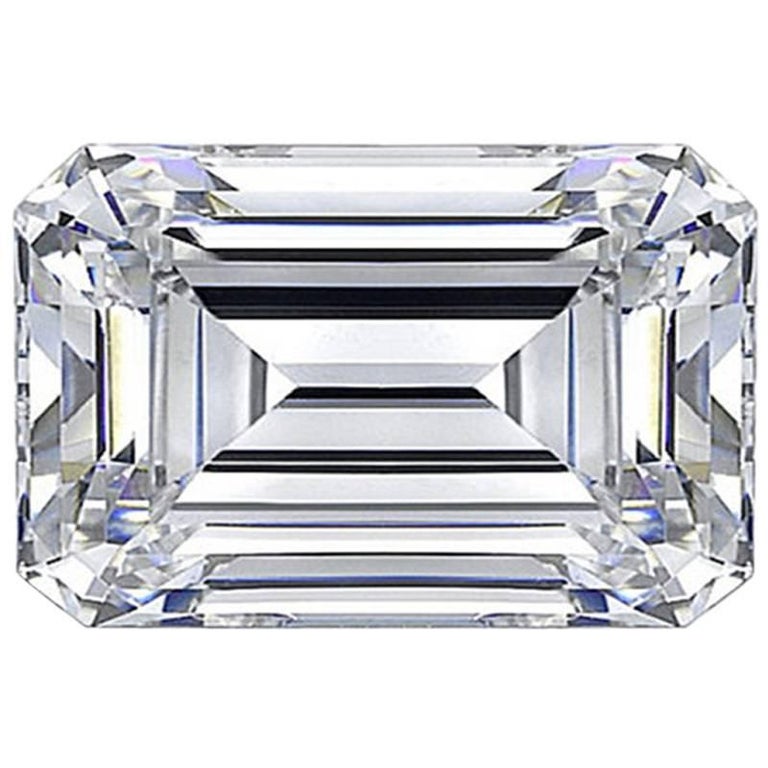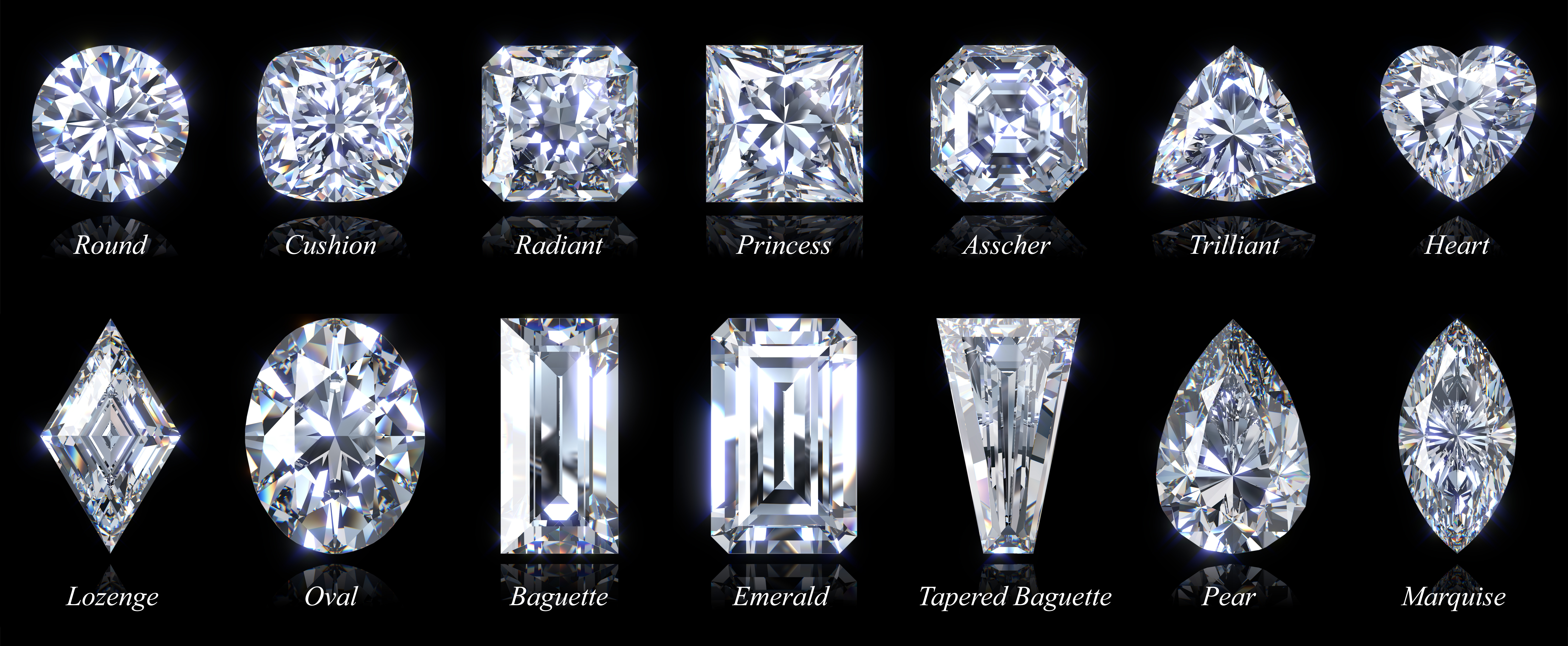
3.71ct G VS1 Modified Rectangular Brilliant Cut Lab Grown Diamond
From Ritani. When it comes to a diamond's measurements, carats and size are two different things. A diamond's size is how large the diamond will look when viewed from above, while carats describe how much the diamond weighs. One carat is equal to 0.2 grams, so a five-carat diamond weighs one gram. A diamond's size is described in millimeters (mm).

What's The Difference Between A Square and Rectangular Asscher Cut Diamond?
The Cushion cut diamond can be either square or rectangular and has soft rounded corners. Cushion cut diamonds often have natural individual characteristics. This is because the cut is less prescriptive; it is subject to the personal preference of the cutter, so there can be many variations.

An Introduction To Diamond Shapes Astwood Dickinson
The most common ratio for a traditional, rectangular shaped radiant cut diamond is 1.25 although ratios range from 1.05 - 1.50. For a square radiant cut, a ratio between 1.00-1.05 is ideal. Elongated radiant cut. The ratio significantly impacts the diamond's visual characteristics. A higher ratio (greater than 1.3) creates a more.
6 Engagement Ring Diamond Shapes to Know Ring Concierge
Diamond shape refers to the geometric appearance of a diamond. Diamond shapes are categorized into two groups: round diamonds and fancy shape diamonds. Round brilliant diamonds are the most traditional diamond shape. Tiffany fancy shape diamonds include princess, cushion, emerald, oval, pear, marquise, heart and our exclusive Tiffany True® diamond.

Geometry Diamond Shape Drawing, diamond, gemstone, angle, rectangle png
Shape describes a diamond's basic outline when viewed face up (round, square, oval, etc.). Cut, or cutting style, refers to how the diamond's facets are arranged. For example, the most common cutting style for diamond shapes is the brilliant cut with an arrangement of 57 or 58 facets designed to maximize sparkle.

GIA 0.50 Carat Cornered Rectangular Mixed Cut M I2 Cashinn Diamonds
Diamond shape refers to the geometric appearance of a diamond. Diamond shapes are categorised into two groups: round diamonds and fancy shape diamonds. Round brilliant diamonds are the most traditional diamond shape. Tiffany fancy shape diamonds include princess, cushion, emerald, oval, pear, marquise, heart and our exclusive Tiffany True® diamond.

GIA Certified 1.02 Carat F Color SI1 Clarity CutCornered Rectangular
These diamonds can be rectangular or squared in edges. Rectangular radiant cut stones have ratios between 1.05 and 1.50 while squared stones have ratios between 1.00 and 1.05. Radiant cut diamonds have about 70 facets. Due to its unique shape, radiant cut offers depth and brilliance comparable to princess and emerald cuts. That is why this.
Exploring the Basics Diamond in a Rectangle Tamarinis
How Diamond Shapes Affect Price. To look at this, we chose a few benchmark carat sizes: 0.5, 0.7, 1.0, 1.2, 1.5, and 2.0 carats. For each size, we collected average prices for each diamond shape for G color, VS2 diamonds from Blue Nile's inventory. Round diamond averages are based on "Excellent" cut diamonds. Diamond price chart with the lowest.
Exploring the Basics Diamond in a Rectangle Tamarinis
The term "diamond shape" refers to the physical and visual shape of the diamond. Each shape has unique attributes influencing the diamond's overall appearance and brilliance. When purchasing a diamond, customers typically consider its shape as one of the primary factors.

Fourteen popular diamond shapes with titles isolated on black
The radiant cut diamond is the first rectangular cut to have a complete brilliant-cut facet pattern applied to both the crown and pavilion, creating a vibrant and lively diamond. The modified square shape is a nice bridge between a cushion and a princess cut, and for that reason looks beautiful set with both rounded or square cornered diamonds.

Rectangular Modified Brilliant 1.0ct Loose Diamond H / Flawless GIA
The diamond itself has a rectangular shape, but the facets catch the light and make the diamond look like a never-ending hall of mirrors. The ideal ratio for emerald cut diamonds ranges from 1.3 to 1.45. Marquise: Marquise diamonds have a breathtaking look, with the long elliptical diamond giving your engagement ring a timeless look. The ideal.

A Pair of CutCornered Rectangular Diamonds Weighing 1.01 and 1.04
November 8, 2022 by July A rectangle is a four-sided polygon with two pairs of parallel sides. It can also be defined as a parallelogram with four right angles. A diamond is a quadrilateral with two pairs of parallel sides, but its sides are not all the same length. So, a diamond shape is not a rectangle.

Set Of White Diamonds With Rectangle Cuts Stock Illustration Download
A diamond's shape refers to the general silhouette of the stone and is not to be confused with cut, or the stone's facet arrangement. For more information on how to differentiate between diamond shape and cut, go here. Read on for GIA's Diamond Shape buyers guide to some of the most frequently seen diamond shapes, and their defining.

A 1.02 Carat CutCornered Rectangular Diamond, G Color, VS1 Clarity
A rhombus is sometimes called a rhomb or a diamond. The Parallelogram A parallelogram has opposite sides parallel and equal in length. Also opposite angles are equal (angles "A" are the same, and angles "B" are the same). NOTE: Squares, Rectangles and Rhombuses are all Parallelograms! Example:

Diamond Cut Types Diamonds Cuts Chart for Clarity, Color
The word "diamond" is not a formal mathematical term; some people take it as equivalent to "rhombus", while others equate it to "kite", or treat it as either a "tilted square" or any rhombus oriented so that the long diagonal is vertical ("standing on a point").

Rectangle radiant cut center diamond with round brilliant cut side
Diamonds are a particular type of quadrilateral known as a rhombus, specifically one with equal-length sides. Learn the difference between diamonds and other rhombuses, and how to recognize.